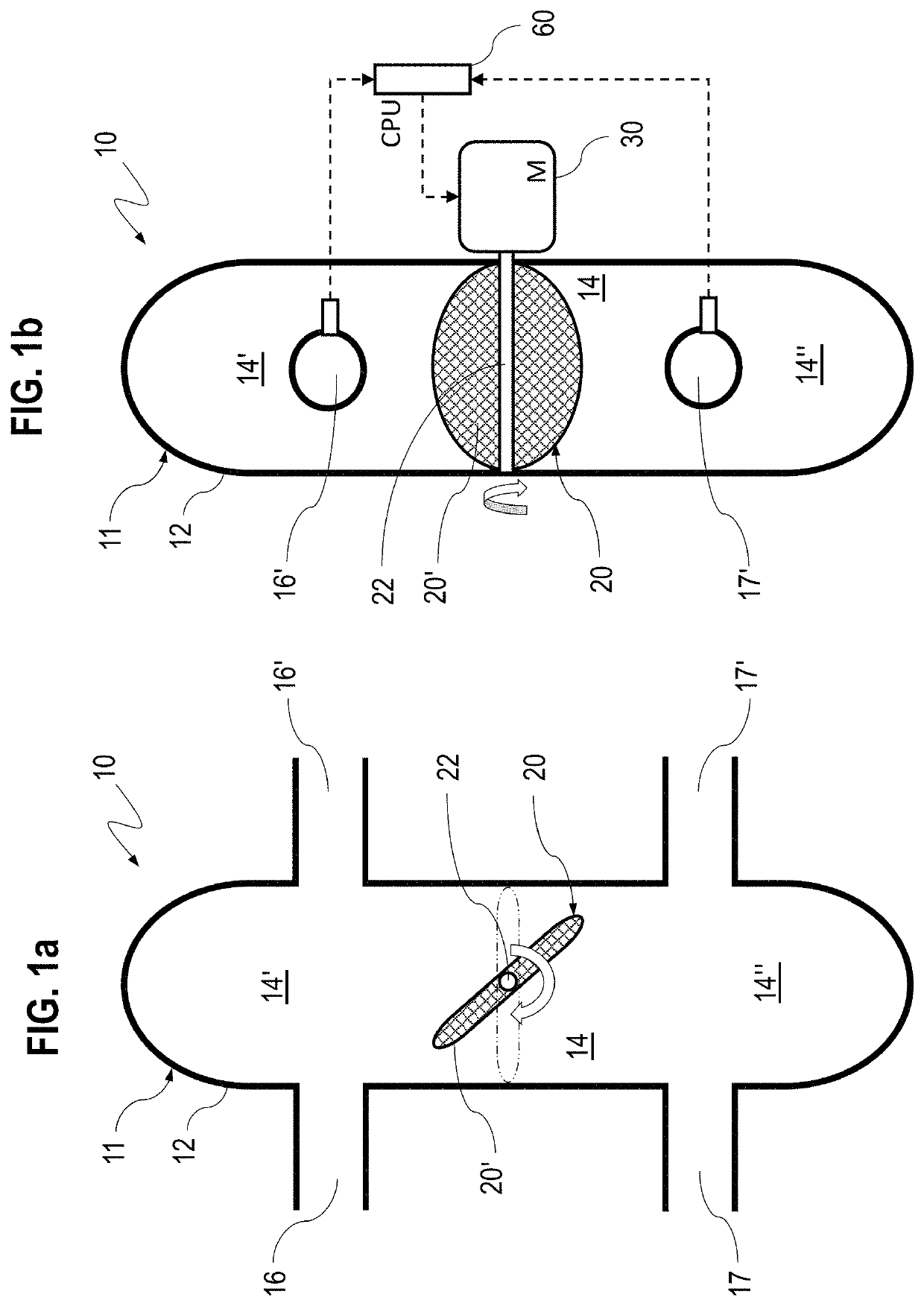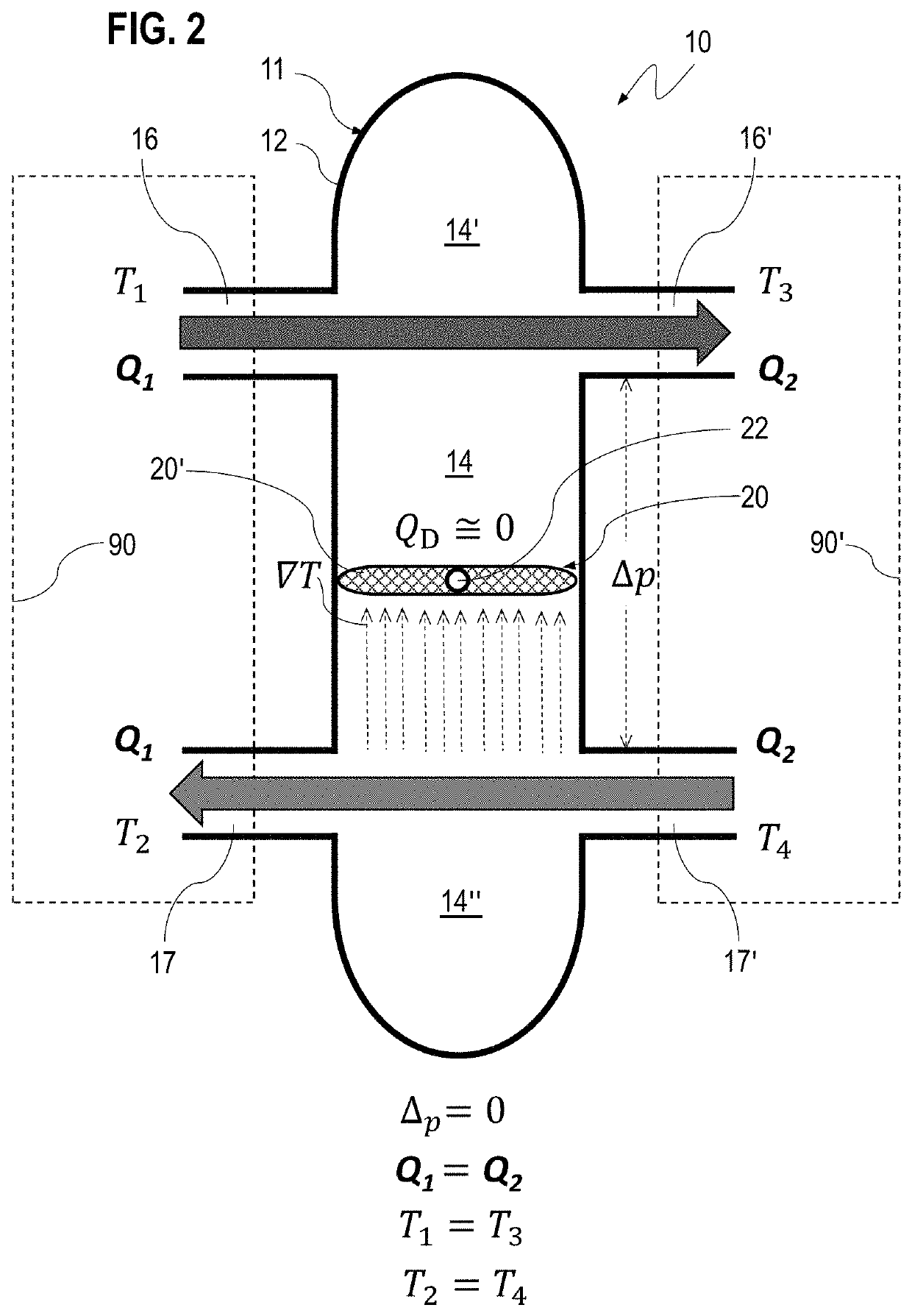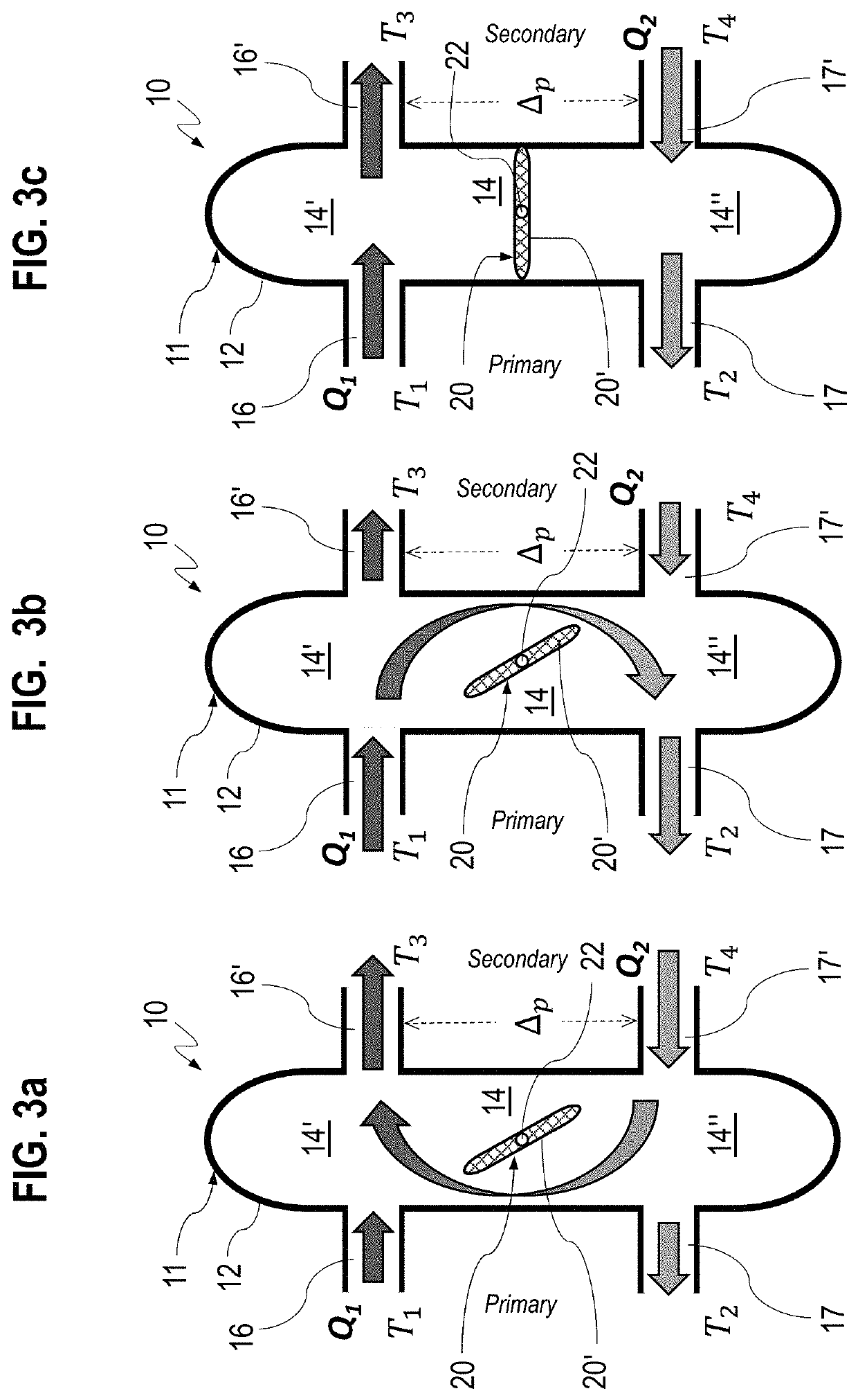Hydraulic separator with reduced heat dispersion and control method therefor
a technology of water separator and heat dispersion, which is applied in the direction of space heating and ventilation, lighting and heating apparatus, heating types, etc., can solve the problems of limited thermal efficiency of the system, drawbacks and operating limits, and the quantity of heat or cooling capacity possessed by the inlet fluid is dispersed, so as to reduce the dispersion of energy, and increase the level of thermal efficiency
- Summary
- Abstract
- Description
- Claims
- Application Information
AI Technical Summary
Benefits of technology
Problems solved by technology
Method used
Image
Examples
Embodiment Construction
[0046]With initial reference to figures from 1a to 2, it is represented, in a preferred embodiment, a hydraulic separator with reduced heat dispersion, in figures specified with 10, for installation on hydronic systems for heating and / or cooling, said hydraulic separator 10 including:[0047]a hollow body 11 with a casing 12 internally defining a chamber 14;[0048]at least two first through openings 16, 16′, for the delivery of a fluid and at least two second through openings 17, 17′, for the return of a fluid, said first openings 16, 16′ and said second openings 17′, 17 being obtained on said casing 12 of the body 11 and being suitable to put in fluid communication said chamber 14 to external circuits by hydraulic connection means.
[0049]The hydraulic separator 10 of the present invention has the innovative feature of comprising at least one mobile element 20 suitable for separating the chamber 14 of the body 11 in a first portion 14″ of volume and a second portion 14″ of volume, in su...
PUM
 Login to View More
Login to View More Abstract
Description
Claims
Application Information
 Login to View More
Login to View More - R&D
- Intellectual Property
- Life Sciences
- Materials
- Tech Scout
- Unparalleled Data Quality
- Higher Quality Content
- 60% Fewer Hallucinations
Browse by: Latest US Patents, China's latest patents, Technical Efficacy Thesaurus, Application Domain, Technology Topic, Popular Technical Reports.
© 2025 PatSnap. All rights reserved.Legal|Privacy policy|Modern Slavery Act Transparency Statement|Sitemap|About US| Contact US: help@patsnap.com



